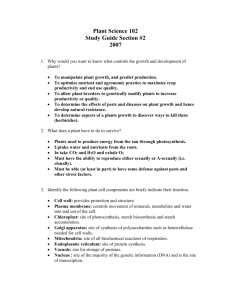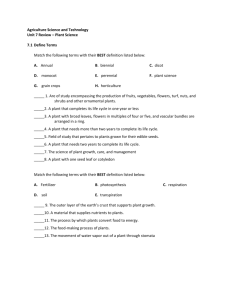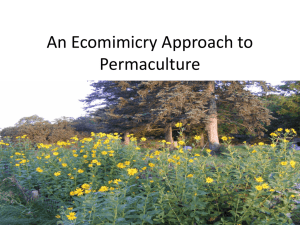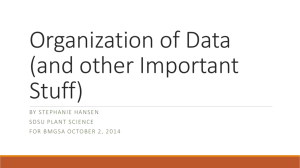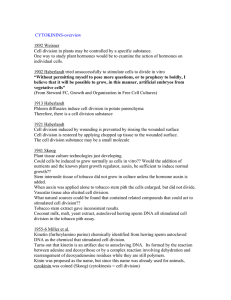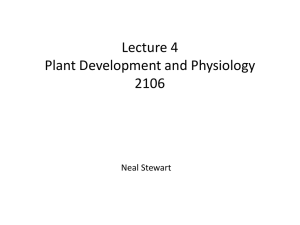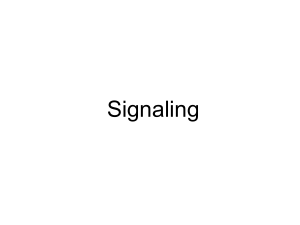Study guide Questions
advertisement
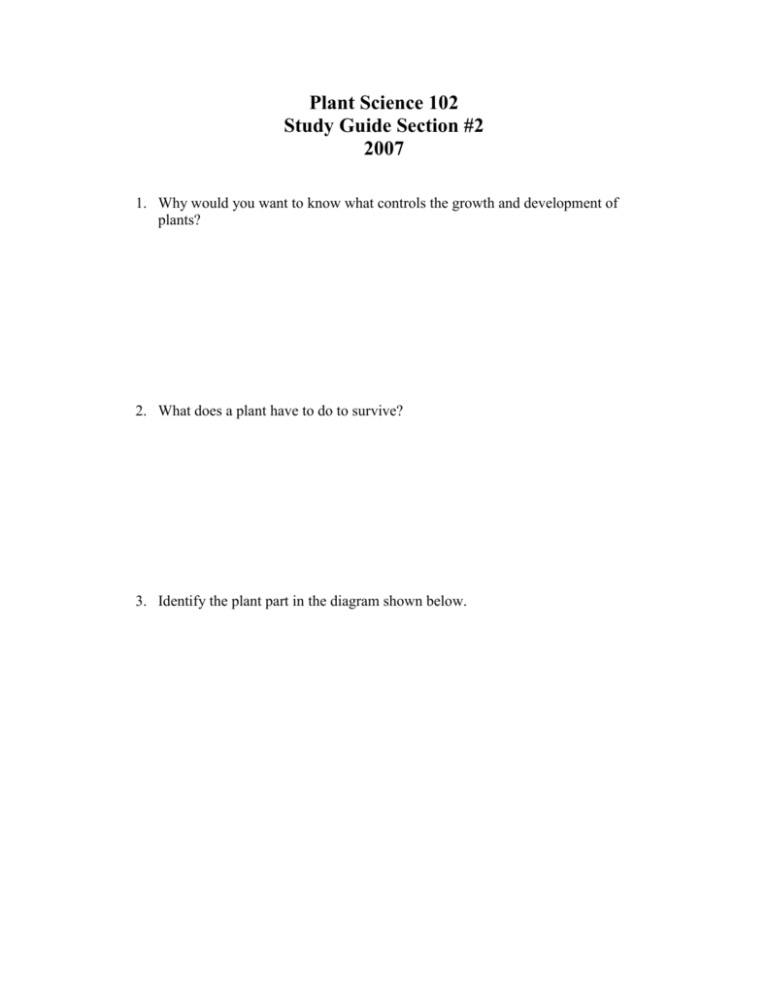
Plant Science 102 Study Guide Section #2 2007 1. Why would you want to know what controls the growth and development of plants? 2. What does a plant have to do to survive? 3. Identify the plant part in the diagram shown below. 4. Identify the following plant cell components are briefly indicate their function. Cell wall: Plasma membrane: Chloroplast: Golgi apparatus: Mitochondria: Endoplasmic reticulum: Vacuole: Nucleus : 5. Which plant cells can differentiate into different cell types? 6. What is the major function of the following cell types? (a) Parenchyma cells (b) Collenchyma cells (c) Sclerenchyma cells 7. Meristematic cells in plants differentiate into three tissue types. Label the three tissue types on the stem cross section shown below. 8. What is the major function of Vascular tissues? 9. What is the major function of stometes? 10. What are the tree primary regions of root development? 11. What is the difference between cells that result from mitosis compared to cells that result from meiosis? 12. What is the function of a seed endosperm? 13. Crop plant species can generally be categorized into self-pollinators or outpollinators. What are the major characteristics of each pollinator type? 14. What is the difference between a homozygous locus compared to a heterozygous locus? 15. Label the following part on the flow diagram below. 16. List three reasons for treating seeds. 17. List two methods of A-sexual (clonally) propagation in crop plants. 18. What is the major characteristic of the following plant growth hormones? Auxins Cytokinin Gibberellic acid Abscicic acid Ethylene 19. The ratio of auxin to cytokinin in a tissue dictates growth of auxiliary meristems. Circle the ratio which is most likely to cause the meristem to under go cell division and start to grow. i. High auxin / Low cytokinins ii. Low auxin / High cytokinins 20. Which synthetic plant growth hormone is used as a herbicide? Is this herbicide a gibberellin, auxin or cytokinin? 21. What range of light energy is not generally absorbed by atmospheric gases? 22. The visible light spectrum is also called what? 23. Light intensity is one important factor of photosynthetic efficiency. What causes increased and decreased light intensity? 24. Why is there greater light intensity in Idaho during the summer months compared to the winter months? 25. Which wavelengths of light energy (red, blue or green) are least absorbed into plant leaves for use in photosynthesis? What is the major result of this? 26. What is the major result of photomorphism in plants? 27. If the ratio of red light to far-red light is low in a plant the plant is experiencing high or low competition from a neighboring plant? 28. List two things in a plant that might be affected by day-length? 29. In regard to plant flowering, describe the difference between long-day plants and short-day plants? 30. What is a plants critical day length? 31. List the two major atmospheric gases. 32. What is generally believed to be the major cause of global warming? 33. Approximately what proportion of a plants weight is accounted for by water? 34. Delete the least appropriate word from the following sentences. Bob the pine tree had to stratify/vernilize seeds from pine trees in order to get uniform germination. However, his sister Betty was more interested in stratification/vernilization treatments to get her winter wheat to flower. 35. In photosytem I, two water molecules are converted into what? 36. What is the function of Rubisco in the Calvin Cycle of photosynthesis? 37. Label the components of the photosynthesis diagram below. Light Reaction Calvin Cycle 38. Complete the photosynthesis equation below: + = + 6H2O + 39. What are the three primary soil types? 40. Soil that is saturated with water and with very little air is said to be what? 41. Soil which has the correct mix of water and air is said to be what? 42. What types of soil would most likely have the particle size shown below 43. What causes soil compaction? 44. List four micro plant nutrients. 45. Label the diagram below with appropriate water potential that will result in water movement from the soil to the plant leaves. Air Leaf Stem Root Water potential Soil 46. List four macro plant nutrients. 47. List the major importance of the following plant nutrients. Nitrogen Potassium Phosphorous Calcium 48. If a plant nutrient is mobile within a plant, would deficiency of the nutrient be noted first in old leaves or young leaves? 49. List two plant nutrients that are mobile in plants and two that are immobile in plants. 50. What two factors can influence nutrient uptake in plants.
